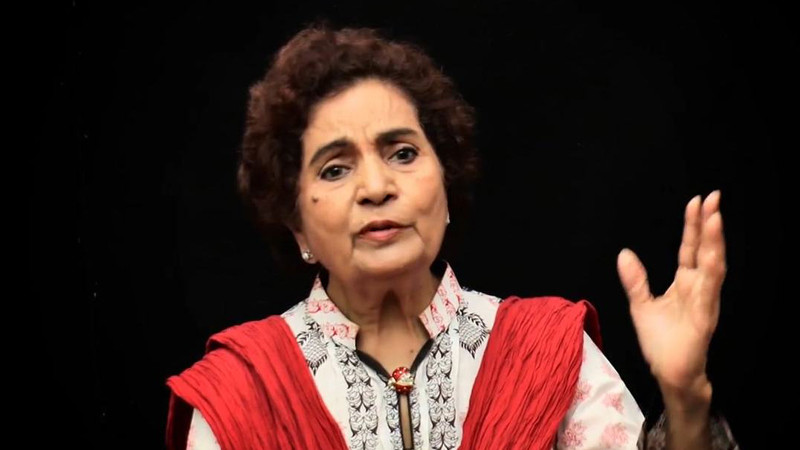
Before delving into her art, let’s first state our relationship with her. Haseena Moin is the mother of a whole generation of women from 70s and 80s and the maternal grandmother of a huge number of Pakistani girls of the new millennium. Most of their vices and virtues have apparently sprung from her pen.
When Moin appeared in popular culture with her first original TV dramas in early 70’s, PTV was the single television channel for a teeming population of at least 10 million people.
This was the golden era of Pakistani television with authentic writers of Urdu literature like Saleem Ahmed, Ashfaq Ahmed, Bano Qudsia, Munnu Bhai, Shaukat Siddiqui and Amjad Islam Amjad, actively contributing to an art form that was still nascent in the country.
Moin was not among these literary giants but she knew the magic of captivating hearts and minds – a magic that grew between the early to late 80s. The power of Moin partly lay in her freshness, her lighthearted humour and her rather faithful depiction of the lives of Urdu speaking families of upper-middle class in 70s and early 80s.
But what captivated the popular imagination were the roles she played – her heroines, who not only had a strong character but were also artless to the degree that they could not perform simple tasks like making an omelet or a cup of tea. These girls were not rebels. They were not fighting against any patriarchal order. They were more like children, spoiled by an overprotective and caring family. The heroines of Moin were innocent, naughty and irresponsible.
If we use Freud’s terms, these heroine were at their best pre-adolescents going through the latency period as sex or sexual attraction had never been a prominent drive, motiving Moin’s protagonists. The crisis in the lives of her characters usually emerged when one of their loving guardians died and these protagonists found themselves in a more vulnerable situation, sometimes without a home.
Family-bonds and home were among the cardinal elements of Moin’s stories. The stories she took up invariably contained very permissive and caring parents. Many times these parents were supplemented by an additional layer of fatherly and motherly figures in the shape of uncles, aunts and old servants.
These protagonists had, therefore. the luxury of being irresponsible and unskilled, knowing that they had a very strong support system to fall back upon. Moin’s world was almost free from negativity and negative characters. Her villains and vamps, if they ever appeared, were hardly evil. Her stories were often about the protagonists coming to realise who they actually loved and what they actually wanted in life.
But by the early 90s, Moin had started losing her touch. Her magic – after influencing a generation of people in Pakistan [and some filmmakers in Bollywood] – was on the wane.
Was she losing her freshness? Were people becoming increasingly skeptical about the utility of her innocent, naught and unskilled heroines? Or was the upper-middle class life or the loving and caring support system that her characters relied on disintegrating in real life?
Interestingly, decline in her art and popularity almost coincides with the rise of violent politics that was to grip the Urdu speaking world of lower Sindh for decades. However, Moin will always be remembered for at least three of her serials – Ankahi (1982), Tanhaiyan (1986) and Dhoop Kinare (1987).
Have something to add to the story? Share it in the comments below.


1732243059-0/mac-miller-(2)1732243059-0-165x106.webp)

1672385156-0/Andrew-Tate-(1)1672385156-0-165x106.webp)
-(1)1730443275-0/Copy-of-Untitled-(60)-(1)1730443275-0-270x192.webp)

1730095495-1/WhatsApp-Image-2024-10-28-at-11-04-18-(1)1730095495-1-270x192.webp)









COMMENTS
Comments are moderated and generally will be posted if they are on-topic and not abusive.
For more information, please see our Comments FAQ